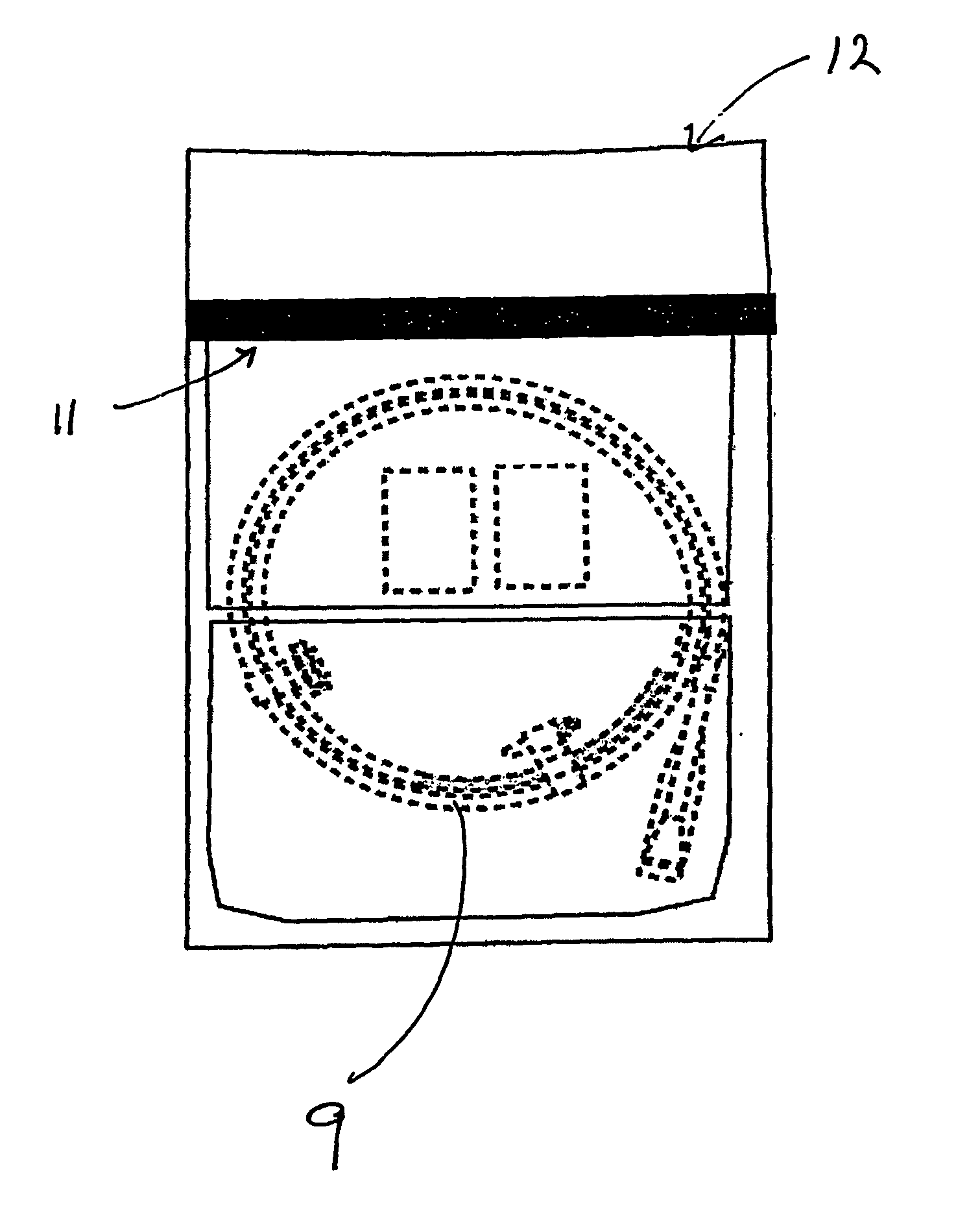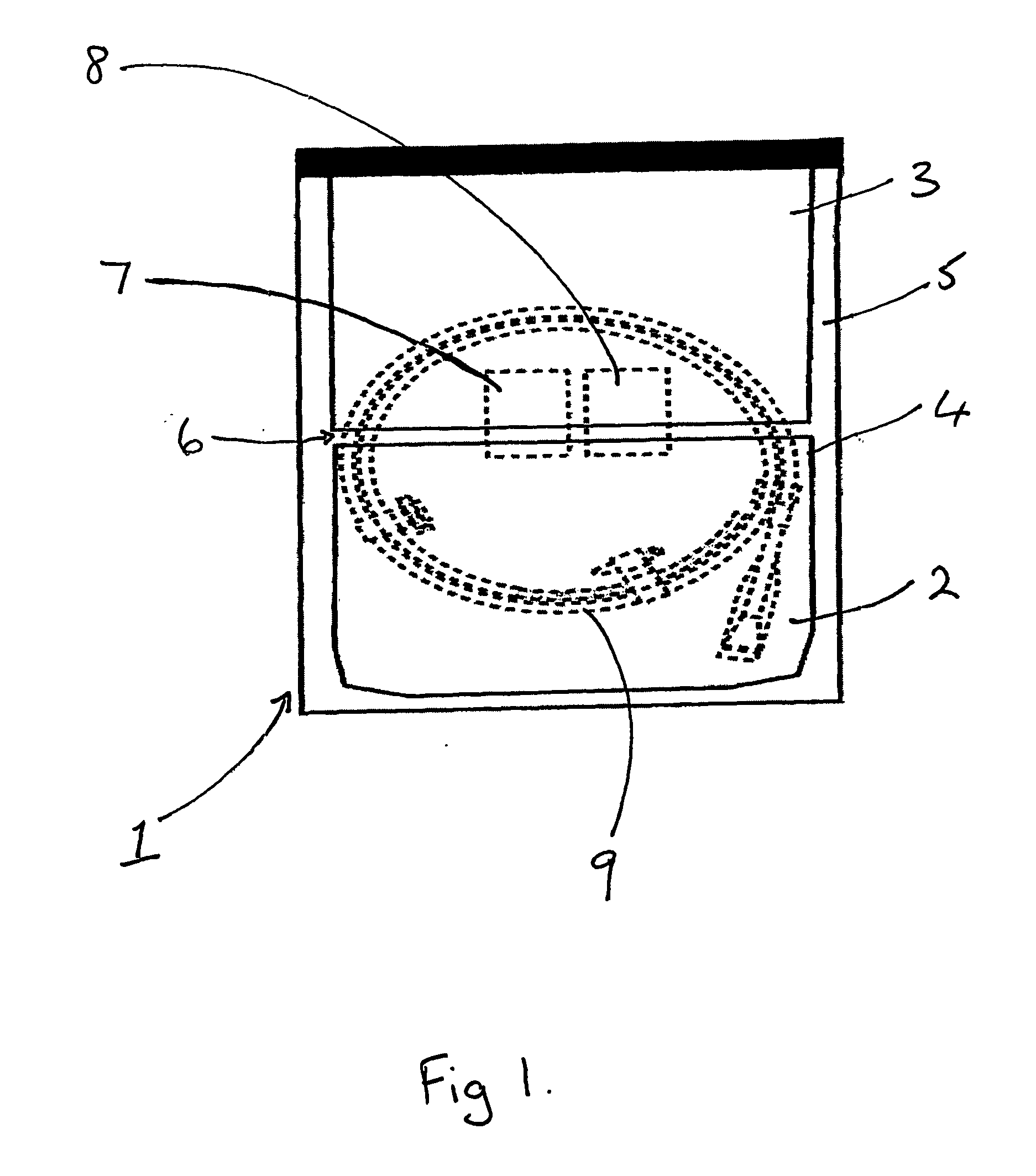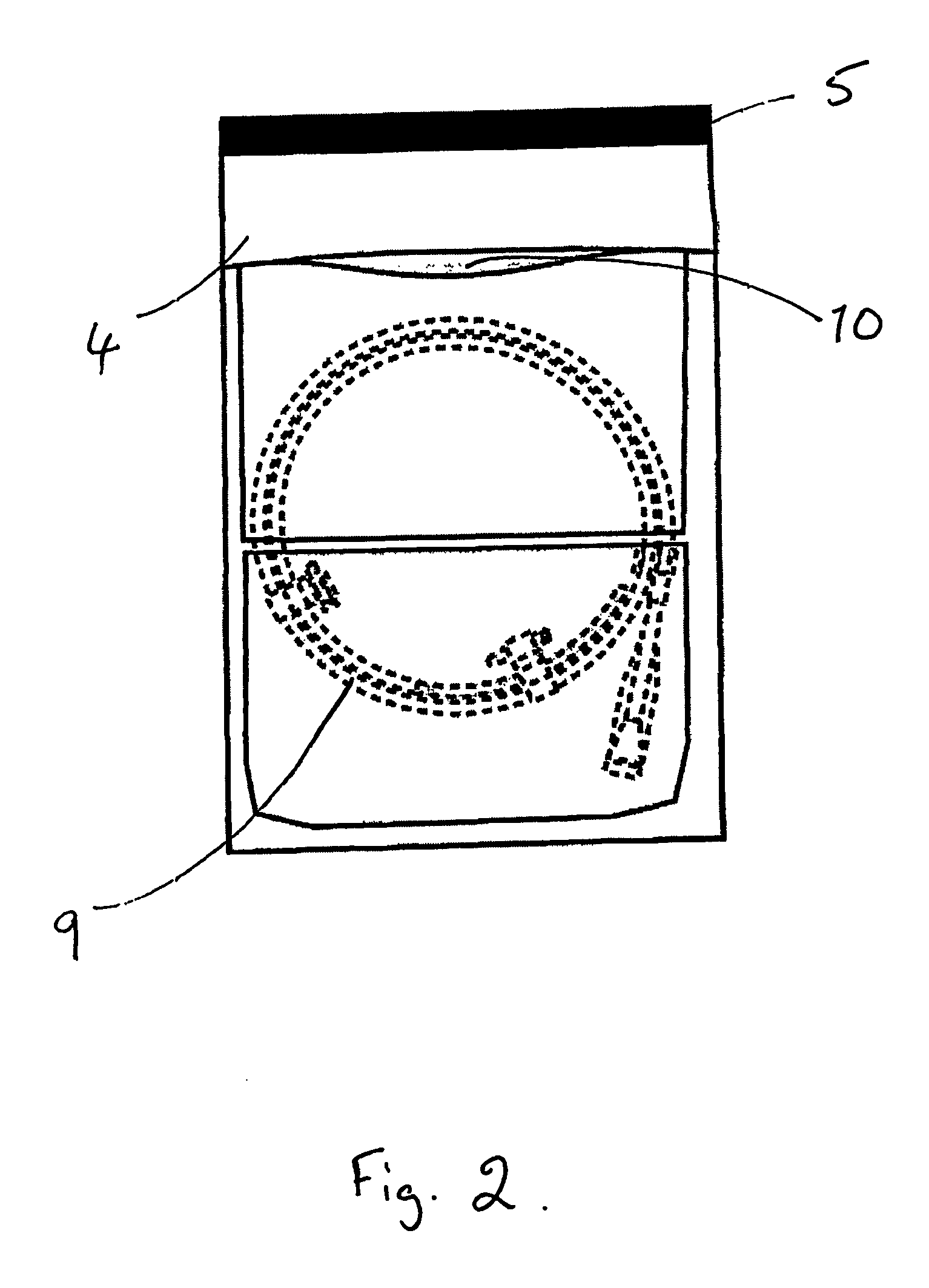Packaging for stent delivery systems
- Summary
- Abstract
- Description
- Claims
- Application Information
AI Technical Summary
Benefits of technology
Problems solved by technology
Method used
Image
Examples
example 2
[0039] The process for packaging a stent which is sterilised by ethylene oxide is slightly different. As shown in FIGS. 2 and 3, the coated stent (9), mounted on a delivery system and loaded onto a coiled dispenser, is placed in the larger of the two compartments (3). In this embodiment the compartment (3) is 365 mm long. One of the two foil sheets (5) is shorter than the Tyvek layer (4) and the other foil sheet (5), so that a section of the Tyvek is exposed on the surface of the package (1). This exposed area (10) provides an entry and exit point for the ethylene oxide gas in the sterilisation process. The compartment (3) is then sealed at its open end, along the line (11) shown in FIG. 3, with a heated bar sealer as described in Example 1. Because one foil sheet (5) is shorter than the other it is not sealed in this operation and so one compartment (2) is left open at one end.
[0040] The package is then sterilised using ethylene oxide in a conventional manner.
[0041] Following ste...
PUM
 Login to View More
Login to View More Abstract
Description
Claims
Application Information
 Login to View More
Login to View More - R&D
- Intellectual Property
- Life Sciences
- Materials
- Tech Scout
- Unparalleled Data Quality
- Higher Quality Content
- 60% Fewer Hallucinations
Browse by: Latest US Patents, China's latest patents, Technical Efficacy Thesaurus, Application Domain, Technology Topic, Popular Technical Reports.
© 2025 PatSnap. All rights reserved.Legal|Privacy policy|Modern Slavery Act Transparency Statement|Sitemap|About US| Contact US: help@patsnap.com



